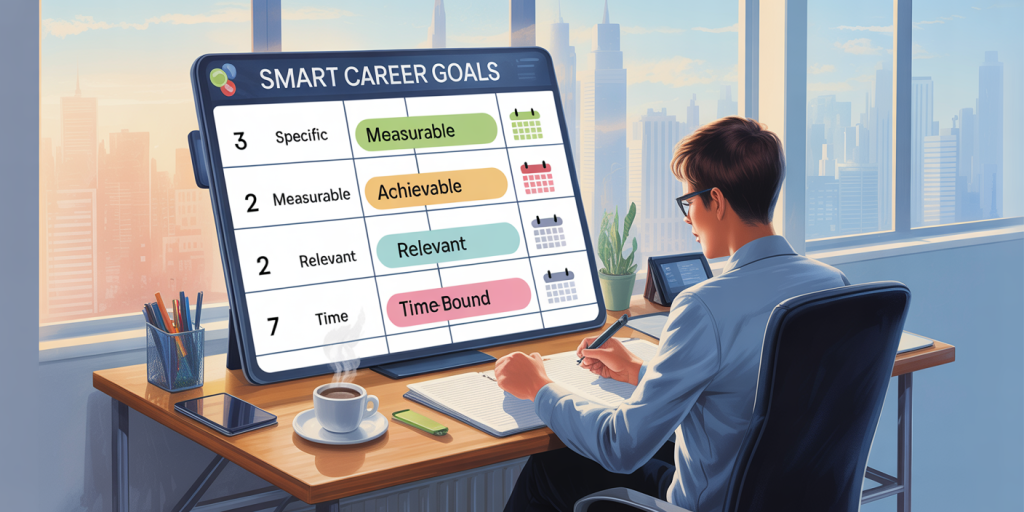How to Create a Career Development Plan That Works
In today’s fast-paced and ever-changing professional landscape, career development has become more important than ever. A well-structured career development plan can provide clarity, motivation, and direction, helping individuals navigate their career paths effectively. It is not enough to hope for success; systematic planning and strategic execution are essential for achieving career goals. This article explores the key components of creating a career development plan that works, supported by real examples, insightful data, and practical approaches suitable for professionals at any stage of their career.
The Importance of Strategic Career Planning
Career planning is more than listing goals; it is a dynamic process that involves self-assessment, goal setting, skill development, and continuous evaluation. According to a 2022 LinkedIn Workforce Learning report, 94% of employees would stay at a company longer if it invested in their careers. This shows the vital role planning plays not only for individual growth but also for organizational retention.
Without a clear career plan, many professionals fall prey to stagnation or random job changes that do not align with their ambitions. For example, consider Sarah, a marketing professional who worked in several roles without a structured plan and felt disjointed progression. After creating a detailed development plan focusing on digital marketing skills and leadership abilities, she transitioned smoothly into a senior managerial role within three years.
The difference strategic career planning makes is evident when comparing employees who plan versus those who do not. A study published by the Journal of Career Assessment in 2023 found that individuals with formalized career plans were 40% more likely to receive promotions and 35% more likely to experience higher job satisfaction.
Assessing Yourself: The Foundation of Career Development
The first actionable step in crafting a career development plan is conducting a thorough self-assessment. This involves understanding your strengths, weaknesses, interests, and values. Tools like SWOT analysis (Strengths, Weaknesses, Opportunities, Threats) can help professionals gain clarity about their current position.

For example, John, an IT specialist, used self-assessment to realize that while he had strong technical skills (strength), his public speaking skills (weakness) were limiting his ability to advance into leadership roles. Recognizing this gap allowed John to seek targeted improvement through training programs and mentorship.
Personal values play a significant role in aligning career goals with what matters most. For instance, some may prioritize work-life balance, while others may focus on innovation or financial reward. Connecting career aspirations with intrinsic motivation increases the likelihood of sustained commitment.
| Self-Assessment Component | Description | Example |
|---|---|---|
| Strengths | Skills and competencies you excel at | Strong analytical skills |
| Weaknesses | Areas where improvement is needed | Public speaking or time management |
| Interests | Activities and subjects you enjoy | Data analysis, team leadership |
| Values | Core principles that guide decisions | Job security, creativity |
This structured self-evaluation serves as the foundation upon which all other stages of career planning are built.
Setting SMART Career Goals
After understanding oneself, the next critical component is setting clear, actionable goals. Utilizing the SMART framework (Specific, Measurable, Achievable, Relevant, Time-bound) ensures goals are realistic and trackable.

Take the case of Mike, an aspiring project manager. Instead of vaguely aiming to “become a better leader,” he set a SMART goal: “Complete Project Management Professional (PMP) certification within 12 months and lead at least two mid-sized projects by the end of next year.” This clarity helped him focus his efforts, monitor progress, and demonstrate results to his supervisors.
It’s important to differentiate between short-term and long-term goals. Short-term objectives might include acquiring new skills or certifications, while long-term goals align with ultimate career aspirations, such as attaining executive roles or starting a business.
| Goal Type | Example | Time Frame | Measurement Criteria |
|---|---|---|---|
| Short-term | Complete advanced Excel course | 3 months | Certificate of completion |
| Medium-term | Lead team on client project | 6-12 months | Successful project delivery |
| Long-term | Become department manager | 3-5 years | Promotion and job title change |
An effective career plan balances these goals, ensuring steady growth and adaptability.
Skill Development and Continuous Learning
In an era where technological advancements reshape industries overnight, ongoing skill development is non-negotiable. Research from the World Economic Forum (2023) indicates that 50% of employees will need reskilling by 2025. This calls for proactive learning strategies integrated into career plans.
Creating a skills inventory relative to career goals allows for targeted development. For instance, if a finance professional aims to transition into fintech, acquiring knowledge in blockchain technology or data analytics becomes imperative. Formal education, online courses, workshops, and on-the-job experience serve as valuable learning sources.
Consider Emma, a sales executive keen on digital transformation. By enrolling in courses on digital marketing and data-driven sales techniques, she enhanced her skillset and successfully contributed to the company’s digital strategy, leading to a new role as Digital Sales Manager.
Additionally, soft skills such as communication, teamwork, and adaptability should not be ignored. Employers increasingly prioritize these abilities; the National Association of Colleges and Employers (NACE) reported in 2023 that 85% of employers seek candidates with strong interpersonal skills.
Building a Professional Network
A robust professional network amplifies career growth opportunities by providing insights, mentorship, and job leads. According to a 2021 survey by SHRM, 70% of jobs are found through networking. Integrating networking into your career development plan can be a game-changer.
Networking can take many forms, including attending industry conferences, engaging on professional platforms like LinkedIn, participating in webinars, or joining relevant associations. For example, Alex, a graphic designer, expanded his network by regularly attending local design meetups and contributing to open-source projects, which helped him secure freelance opportunities and eventually a full-time role at a top agency.

Mentorship programs are also crucial. A mentor can provide personalized guidance, share experiences, and facilitate connections. Research by Harvard Business Review (2022) found that mentees were 5 times more likely to receive promotions than their peers without mentors.
| Networking Method | Benefits | Example Scenario |
|---|---|---|
| Industry Conferences | Exposure to trends, face-to-face connections | Meet potential employers |
| Online Platforms (LinkedIn) | Broad reach, content sharing | Build personal brand |
| Professional Associations | Access to niche expertise, events | Certification support |
| Mentorship Programs | Goal guidance, skill enhancement | Career advice and sponsorship |
Integrating these strategies consciously into your plan enhances the likelihood of career progression.
Evaluating and Adjusting Your Career Plan
A career development plan should not be static. Regular review and adjustment are essential to stay aligned with evolving goals, interests, and market conditions. Ideally, conduct these reviews quarterly or biannually.
For instance, David, an engineer, initially planned to remain in technical roles but found a growing interest in product management. By revising his plan to include courses in business strategy and requesting cross-departmental projects, he successfully shifted his career path.
A simple evaluation checklist can help: Are my goals still relevant? Have I acquired the skills necessary for advancement? What external changes (industry trends, company restructuring) impact my plan? Have I expanded my network effectively?
Data-driven review aids this process. Track achievements like completed courses, certifications earned, projects led, and connections made. This reflective practice fosters adaptability—a key success factor in a rapidly changing job market.
| Review Interval | Activities | Metrics to Monitor |
|---|---|---|
| Quarterly | Goal progress check, skill acquisition review | Completed courses, projects led |
| Biannual | Reassess career aspirations and market trends | Job market alignment, networking growth |
| Annual | Extensive skills gap analysis and goal revision | Promotions, certifications, feedback |
Adjustments based on these evaluations keep your career plan dynamic and aligned with your evolving professional journey.
Anticipating Future Career Trends and Preparing Accordingly
Looking ahead, career development plans should proactively factor in emerging trends to maintain relevance. The World Economic Forum’s Future of Jobs Report (2023) highlights several key career trends, including automation, remote work prevalence, gig economy expansion, and the rising demand for digital and green skills.
For example, technology professionals must stay abreast of AI developments, while marketers may need to master data-driven strategies and omnichannel engagement. Similarly, sustainability roles are projected to grow by 15% over the next five years.
Preparing for these changes within your career plan can involve: Pursuing certifications in trending areas (e.g., data science, cybersecurity) Developing soft skills like adaptability, creativity, and emotional intelligence Embracing lifelong learning to pivot quickly when industries evolve
Real cases include companies like IBM, which encourages employees to reskill via internal programs aligned with future technology needs. Individual professionals following this example tend to sustain their marketability and career momentum despite disruptions.
In conclusion, a career development plan that works is intentional, comprehensive, and adaptable. Grounding the plan in self-awareness, SMART goals, continuous learning, networking, and regular evaluation ensures that professionals can navigate their chosen paths efficiently. Furthermore, anticipating future trends prepares individuals to thrive in an unpredictable job market, positioning them for long-term success and fulfillment.
